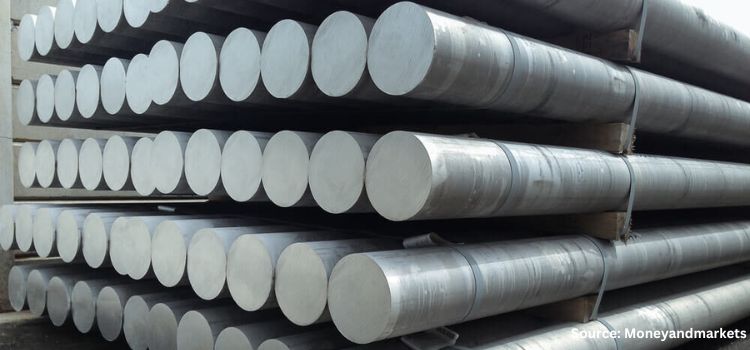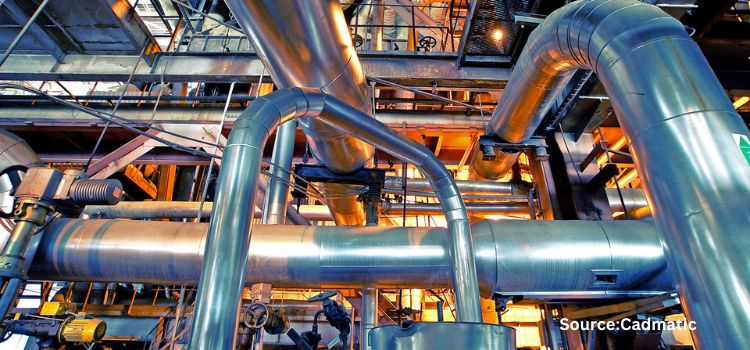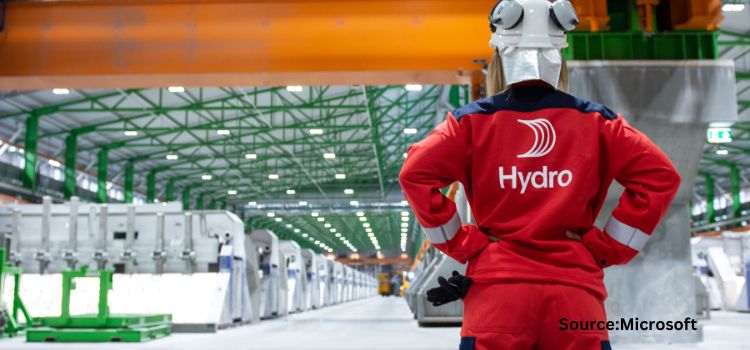Exploring the Thriving Aluminium Market: Trends and Insights
17-Feb-2025

Introduction
In the ever-evolving landscape of industrial materials, aluminium has emerged as a versatile and widely-used metal. Its lightweight nature, corrosion resistance, and excellent conductivity have made it a staple in various industries, ranging from aerospace and construction to automotive and packaging.
Aluminium is a lightweight and silvery-white metal that belongs to the group of post-transition metals. Aluminium is highly abundant in the Earth's crust, making up approximately 8% of its total mass. Beyond its low density, high strength, and remarkable thermal and electrical conductivity, aluminium has also found significant applications in the renewable energy sector. Its use in solar panels, wind turbines, and energy storage systems contributes to the development of sustainable solutions and the growth of the green energy market. In this blog, will explore the emerging trends within the aluminium industry and provide valuable insights that can help us better understand the future impact across various sectors.
Harnessing Modern Tech in Aluminium Production
In recent years, the aluminium industry has undergone technological advancements. The pursuit of innovation has led to groundbreaking developments that are revolutionizing the way aluminium is manufactured, bringing forth higher quality products, reduced costs, and a minimized environmental impact.
One notable initiative that exemplifies the industry's dedication to progress is Vedanta's implementation of IoT devices in fabric filters at its 2,400MW thermal power plant. Vedanta, a leading player in the aluminium market, introduced these cutting-edge devices to improve emissions control and address environmental concerns. The fabric filters serve as a crucial component in the emissions control system by working in conjunction with electrostatic precipitators in the chimneys of the power plant. Their primary purpose is to capture particulate matter, preventing harmful emissions from escaping into the atmosphere. By utilizing IoT technology, these fabric filters are integrated into a smart network that allows real-time monitoring and precise control over the emissions control process. Thus, the integration of IoT devices in fabric filters brings significant benefits to the aluminium industry and the environment.
How Industry 4.0 is Impacting the Aluminium Industry
In the ever-evolving landscape of industrial materials, the aluminium industry is embracing the transformative potential of the Industry 4.0. This concept, characterized by automation, data exchange, and advanced manufacturing technologies, is revolutionizing the way aluminium is produced. Integrating smart sensors, Internet of Things (IoT) connectivity, and real-time data analytics is driving remarkable advancements in aluminium production processes.
Integrating smart sensors allows manufacturers to monitor and optimize production processes by collecting real-time data on temperature, pressure, and vibration. This data provides valuable insights for proactive issue identification and maintenance of optimal conditions, preventing costly downtime. The Internet of Things (IoT) takes connectivity to the next level by facilitating seamless communication between machines and systems. IoT connectivity allows data from various production stages to be collected, analyzed, and shared in real-time, improving coordination and enhancing overall efficiency and productivity.
Real-time data analytics transforms raw data into actionable insights, enabling predictive maintenance, optimized resource allocation, and continuous process improvement. By leveraging advanced analytics tools, decision-makers can make informed choices, improve quality control, and identify opportunities for operational enhancement. The integration of these advanced technologies empowers the aluminium industry with increased efficiency, productivity, and operational excellence.
The Emergence of Additive Manufacturing
Additive manufacturing, commonly known as 3D printing, successfully transformed the way aluminium components are produced. This innovative technology enables the creation of intricate and lightweight designs that were difficult to manufacture using traditional methods. By layering materials precisely, additive manufacturing allows the production of complex aluminium parts with minimal material waste. This approach also offers increased design flexibility, as intricate geometries can be easily achieved. Additionally, additive manufacturing reduces production times as compared to the traditional manufacturing techniques.
As an example, several high-strength aluminium alloys are suitable for 3D printing. Some notable examples include AlSi10Mg, Al7075, Al6061, and Scalmalloy. This alloy exhibits excellent strength and good thermal properties, making it suitable for various applications in the aerospace, automotive, and engineering industries. These high-strength aluminium alloys, among others, are paving the way for producing lightweight and strong aluminium components using additive manufacturing techniques. With its flexibility, efficiency, and design possibilities, additive manufacturing is revolutionizing the aluminium industry and opening up new opportunities for various sectors.
Conclusion
In conclusion, the aluminium industry is at the forefront of embracing technological advancements to enhance efficiency, productivity, and sustainability. As the industry continues to harness the power of technology, it is poised to achieve higher quality products, reduced costs, and a minimized environmental impact. The aluminium industry's commitment to innovation positions it as a key player in meeting the evolving demands of various sectors, ranging from aerospace and construction to automotive and packaging. With a focus on technological advancements, the aluminium industry is shaping a sustainable and promising future.
About the Author
 Saurav Sarkar is an accomplished researcher and writer with over three years of experience in conducting thorough research. His passion for exploring various subjects and delving into in-depth analysis has led him to develop a keen understanding of research nuances. He remains committed to staying current with the latest market trends, recognizing their impact on businesses and society. Through his work, Saurav aims to contribute to knowledge dissemination and foster informed discussions on critical issues. The author can be reached at info@nextmsc.com
Saurav Sarkar is an accomplished researcher and writer with over three years of experience in conducting thorough research. His passion for exploring various subjects and delving into in-depth analysis has led him to develop a keen understanding of research nuances. He remains committed to staying current with the latest market trends, recognizing their impact on businesses and society. Through his work, Saurav aims to contribute to knowledge dissemination and foster informed discussions on critical issues. The author can be reached at info@nextmsc.com
Add Comment
Related Blogs
Industry Giants Securing 70 percentage of the Cold Pipe Insulation Market – What Sets Them Apart
Next Move Strategy Consulting forecasts a notable upsurge in...
Norsk Hydro Asa, Leading the Aluminium Sector With Around 28 Percentage Share – Here is Why
The aluminium market is expected to see a remarkable gr...
Exploring Closed Cell Crosslinked Foams: Advancements in Aerospace Applications
Introduction: Closed cell crosslinked foams have emerged...











